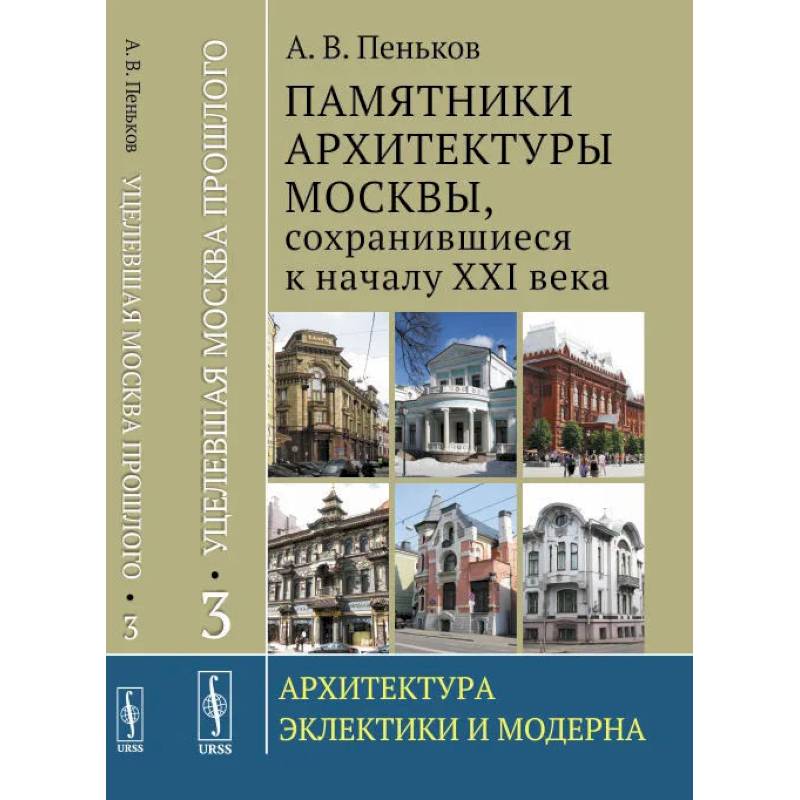Surviving Moscow of the past. Architectural monuments of Moscow that have survived to the beginning of the 21st century. Book 3: Architecture of electricity and [text is cut off]
Please sign in so that we can notify you about a reply
This work introduces readers to the architecture of Moscow of the past using the example of architectural monuments that survived after numerous reconstructions of the city in the twentieth century. The work was built in the form of a brief story about the development of the architecture of the capital since the 19th century. Before the 1917 revolution, which is accompanied by an analysis of the stylistic and (if necessary) design features of architectural solutions characteristic of the historical periods under consideration. A large number of illustrations are presented, which provide photographs of architectural monuments preserved to our time. In total, about 750 Moscow architectural monuments located inside the Moscow Ring Road or next to it were considered in the work. The review includes all the churches built before 1917, monastery buildings, the Kremlin, residential and public buildings.
The work consists of three books, each of which represents the Moscow architecture of a certain time. The real, third book tells of the monuments of architecture of Moscow, built in the second half of the nineteenth - early twentieth century. Together with the revolution of 1917, new aesthetic ideas came. This year has become a dividing milestone between the architecture of the past and future. The twentieth century with its rapid development of industry, including the construction industry, transformed architecture, forced him to look differently at urban planning. Moscow, having become the capital of the new Soviet state, began to rapidly increase in terms of population, and in the territory, and in saturation of industrial industries. Urbanization and gigantic scope of construction belittled the urban planning significance of the architectural monuments of the past, which literally “dissolved” in modern buildings. However, all the more valuable for future generations preserved monuments of architecture of this time
The work consists of three books, each of which represents the Moscow architecture of a certain time. The real, third book tells of the monuments of architecture of Moscow, built in the second half of the nineteenth - early twentieth century. Together with the revolution of 1917, new aesthetic ideas came. This year has become a dividing milestone between the architecture of the past and future. The twentieth century with its rapid development of industry, including the construction industry, transformed architecture, forced him to look differently at urban planning. Moscow, having become the capital of the new Soviet state, began to rapidly increase in terms of population, and in the territory, and in saturation of industrial industries. Urbanization and gigantic scope of construction belittled the urban planning significance of the architectural monuments of the past, which literally “dissolved” in modern buildings. However, all the more valuable for future generations preserved monuments of architecture of this time
Author:
Author:Пеньков А.В.
Cover:
Cover:Hard
Category:
- Category:Arts & Photography
- Category:History & Geography
Publication language:
Publication Language:Russian
ISBN:
ISBN:978-5-9519-2428-5
No reviews found
